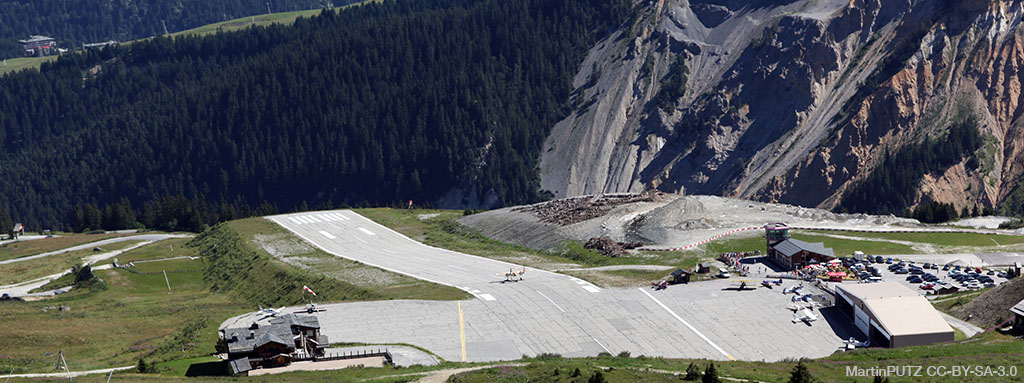If there is one feature that is inherent to the existence of airports, it is runways. Runways are an airport’s raison d’être. The size and number of runways dictate the type and number of aircraft that can use that aerodrome and, consequently, are a key factor in determining an airport’s capacity.
Many technical factors are involved in the design of an airport runway, which determine its ideal characteristics.
Whether a runway is bigger or smaller is not a trivial matter. It affects the types of aircraft that can use it, safety margins in adverse conditions, construction costs, maintenance, ancillary services, etc. Its design must therefore be adapted to each specific case. But how do you determine what the correct length is?
There are several major technical factors involved in deciding the required runway length, including aircraft type, surface type, longitudinal slope, altitude and climate.
The aircraft type is the type of aircraft that will operate at the airport most frequently, and thus defines the ideal length of the runway. Every aircraft has specifications that indicate how many metres are necessary to carry out each of its operations in different situations. However, it is prudent to consider that there will be other aircraft with greater requirements that may use that aerodrome, and it is therefore logical to use these values in order to determine the runway’s dimensions.
This factor is very interesting because, not only is it necessary to bear in mind the length required by a particular aircraft model, but we must also use values for less than ideal conditions (especially adverse weather conditions), as we will discuss later on.
Several examples could be given depending on the nominal characteristics of some fully loaded aircraft. At one end, we have the Boeing 747-8, which requires around 3,090 metres for take-off, and the Airbus A380-900, which requires 3,100 metres. However, the most common aircraft found in most airports need much less runway. This is the case for the Boeing 737-800, which requires 2,450 metres for take-off, and the Airbus A319, which can take off in just 1,950 metres.
A second factor to consider is the longitudinal slope of the runway. Ideal design conditions would have a 0.0% slope, but sometimes geomorphological constraints force the construction of runways with a significant slope. In these cases, and bearing in mind the prevailing winds, whether the slope is positive or negative will affect whether the aircraft requires more or less runway for its operations.
The cases of Courchevel airport in the French Alps, with a slope of up to 18.5%, and Lukla airport (Nepal) in the middle of the Himalayas, with a slope of 12%, are particularly well known.
The nature of the runway is also a determining factor. Runways can be made of asphalt, cement, grass, earth or even compacted snow. Each material has specific characteristics that affect the aircraft’s landing and take-off roll, especially the friction coefficient. This directly affects take-offs and landings, and consequently determines the runway length required for the aircraft to operate.
There are also curious cases such as Barra Airport (Outer Hebrides in north-western Scotland). Its runway is located in the middle of a beach and operations are carried out on the sand, which can be more or less flooded depending on the tides.
Another important factor in defining the length of a runway is its altitude. Altitude is inversely related to air density. As the height above sea level increases, less air circulates through the aircraft engine, which means there is less thrust. Low air density also affects the wing’s ability to produce lift, which necessitates higher speeds and a greater angle of attack. Consequently, for a given aircraft model, the runway length required for operations is greater at higher altitudes than if the airport were at sea level.
The world’s highest commercial airport is Daocheng Yading Airport, in Sichuan Province (China), located 4,411 metres above sea level. To get a clear idea of what that means, keep in mind that air pressure at sea level is 1 atmosphere (760 mmHg), whereas at this airport it is only 0.577 atmospheres (439 mmHg), almost half the value.
Close behind on the list of the world’s highest airports is Changdu Bamda (4,334 m), Kangding (4,280 m) and Ngari Gunsa (4,274 m), all in China. The highest airport located in a capital city is El Alto International Airport in La Paz (Bolivia), which is 4,061 metres above sea level.
The climate of a particular place is the set of atmospheric conditions typical of that area, as well as their variations over time. Every airport is subjected to a regional climatic characterisation that allows us to predict the standard conditions that will be found there at any given time of year. Temperature is usually among the most important parameters for defining the length of a runway.
Heat is the direct cause of hundreds of flights being cancelled every year. The higher the temperature, the lower the air density (fewer oxygen molecules per unit volume) and consequently the lower the combustion and power. As in the case of altitude, it is therefore necessary to have a longer runway for take-off. Although it is logical to calculate the average annual temperatures of an area, the frequency and transience of extreme climatic episodes should also be taken into account.
The Middle East stands out when it comes to high temperatures. The highest temperatures that have ever been recorded at an airport are 54 ºC in Ahvaz (Iran), in June 2017, and 53.9 ºC in Basra (Iraq), in July 2016.
On the opposite side of the spectrum is the world’s coldest airport, which is in Oymyakon (Russia), where the temperatures dropped to -67.7 ºC in an area that only exceeds an average of zero degrees for three or four months of the year.
A runway’s condition is not directly related to its design, but it does have an impact on the number of metres required by an aircraft to land or take off. Poor maintenance or the presence of dust, sand, water or other elements can significantly affect operations.
When calculating the space requirements for an aircraft’s landing, the possibility of poor grip conditions on a runway is usually compensated for by an increase of around 15% over the ideal conditions.
The design and sizing of runways is a complex task involving many technical parameters. But that is not all. It cannot be an isolated technical assessment, but must also go hand in hand with a thorough assessment of the economic, social, environmental and opportunity needs associated with the aerodrome.



